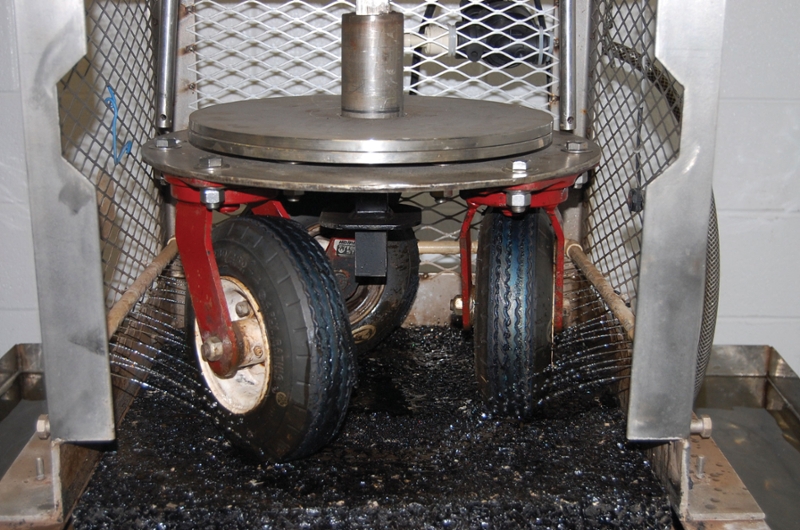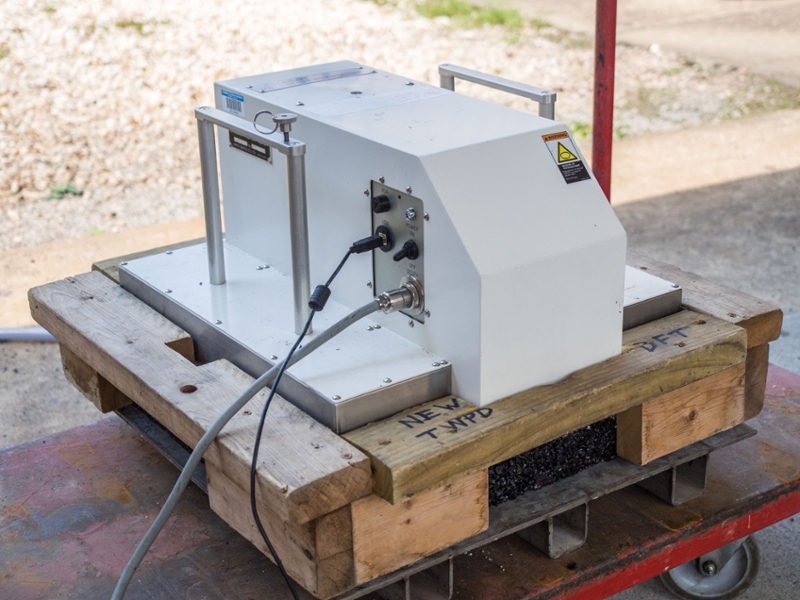- Fall 2016
New Generation Accelerated Laboratory Pavement Friction Procedure
Highway agencies desire to provide a certain level of pavement friction based on the traffic level and speed limit of the route. Material specifications typically identify suitable friction aggregates based on historical field performance and one or more aggregate attributes, such as mineralogy or British pendulum number. Often, the historical field performance relates to coarse graded surface mixtures placed ten or more years prior. As agencies move to smaller NMAS surface mixtures, are the friction aggregate specifications still valid? If the criteria are specified for coarse aggregate but the amount of coarse aggregate in the mixture is substantially reduced, will the pavement friction performance remain the same?
As asphalt surface mixtures change, agencies are faced with a decision to apply very conservative friction aggregate criteria or perform a friction study to monitor friction performance under traffic for a range of aggregates and mixes. The conservative approach is quick but could be costly if friction aggregate is an expensive imported material. A full-scale friction study creates optimal criteria but is costly, takes years, and may place the driving public at risk. As an alternative to full scale field testing, NCAT has developed an accelerated laboratory procedure to measure friction performance on asphalt mixtures rather than the traditional approach to testing aggregates. The full procedure can be completed in less than two weeks.
In this procedure, NCAT prepares 20-inch by 20-inch asphalt slabs 2 inches thick using a rolling kneading compactor. After a slab is prepared, it is placed on a rigid steel pallet to prevent deformation. The initial friction properties of the slab surface are measured using ASTM E1911 “Standard Test Method for Measuring Paved Surface Frictional Properties Using the Dynamic Friction Tester (DFT).” The surface of the slab is then polished at an accelerated rate using the NCAT Three Wheel Polishing Device (TWPD). The TWPD polishes the surface with three pneumatic tires and operates at 60 revolutions per minute with a constant flow of water to wash away fines. A template is placed around the slab as a guide for the DFT so the friction measurements will be taken in the same wheel path. DFT measurements are taken at intervals up to 140,000 cycles to determine the surface’s friction performance curve and terminal frictional value.

Figure 1: Preparing 20x20 Slabs with a Linear Kneading Compactor

Figure 2: NCAT Three Wheel Polishing Device

Figure 3: Measuring Slab Surface with a Dynamic Friction Tester
NCAT has completed several national and state studies with this procedure. A typical study includes preparing a surface with a known friction field performance (the agency’s standard friction surface) and preparing one or more test surface mixtures with varying aggregate types and proportions. The study determines if the test mixture surface will perform equal to the standard. This is the next-generation procedure to develop good performing asphalt surface mixtures. The laboratory results are based on mixture performance (not coarse aggregate) and the dynamic friction tester (advanced small-scale test).